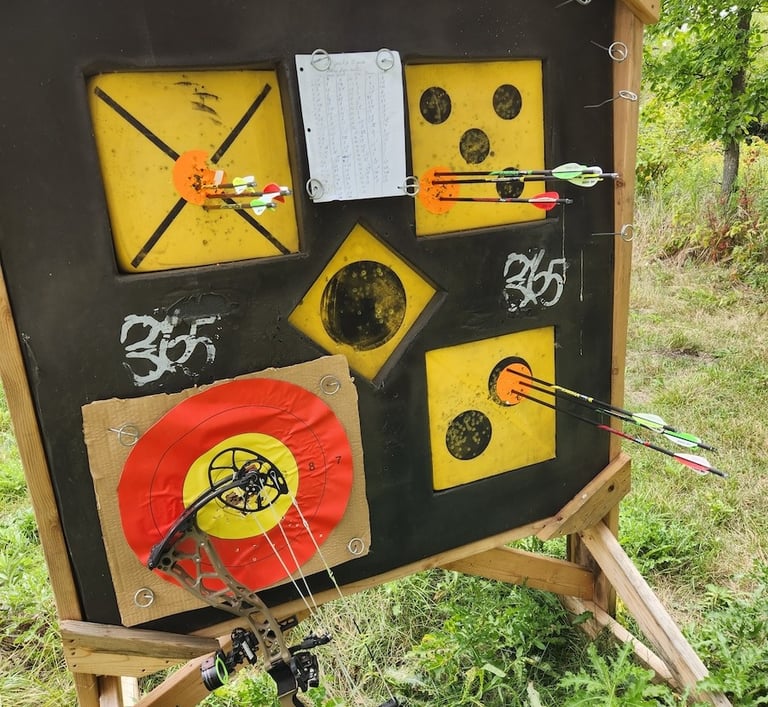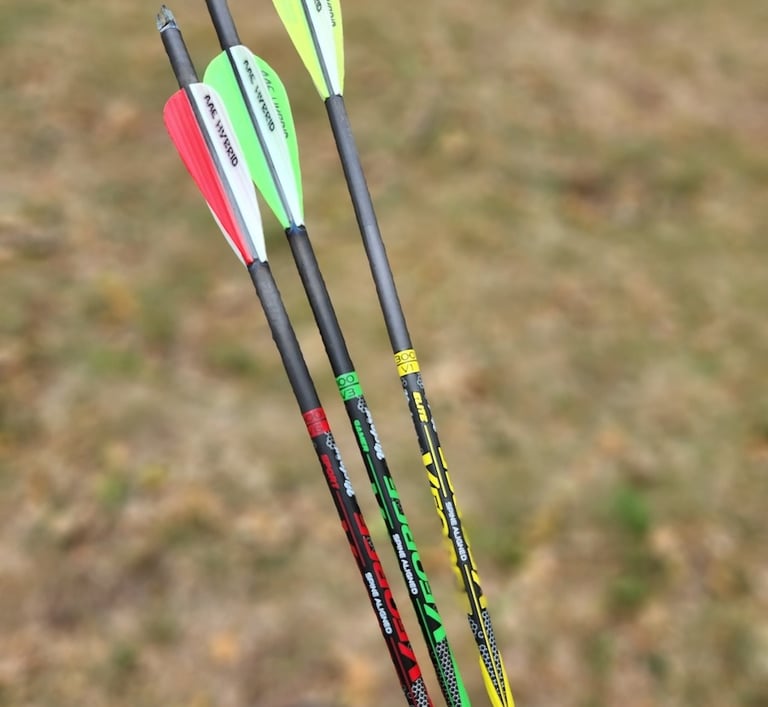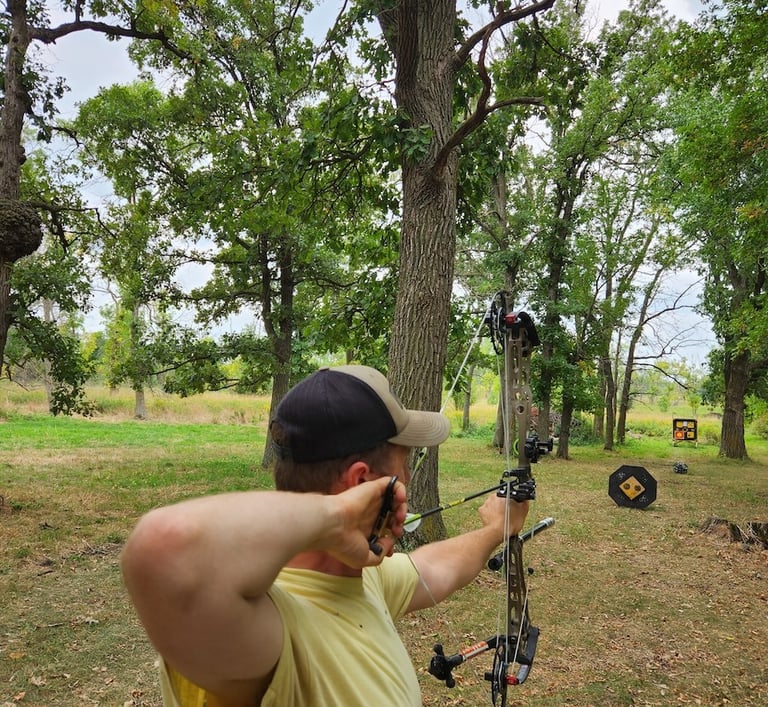Straight as an Arrow
The everyday topic that turned into an all-day shooting trial
ADVOCACY & EDUCATIONMEMBER SUBMITTED
An archer improves accuracy by decreasing the inconsistencies that can occur within their shot. This has been seen through an emphasis in bow tuning, form critique, matching arrow weights, and fletching type/orientation amongst other things deemed pertinent. After flirting with the brink of paranoia, we ask ourselves “what is truly important? What will make the difference down range and is fiscally or physically feasible to achieve?” Arrow straightness is a leading factor in arrow quality, and associated in greater precision. Whether hunting or competing, it is something that has been agreed upon as vital to better flight. At the pro shop, it a daily talking point with customers as new comers and old timers in the sport look for advice on sorting through the numerous and overwhelming options available in arrows. Arrow manufacturers offer a plethora of arrow spines, diameters, weights, and fletch type, which alone requires large investment on the behalf of retailers to stock, only to be magnified by different straightness tolerances of each model. An archer has to decide if the idea of straighter arrows is worth the increased price. For example the Victory VAP arrow shaft, a .166 inside diameter shaft common for hunting and target is offered in three straightness grades. The price for a dozen bare shafts in the smallest straightness deviance (.001”) is $199 approximately or $16.5 per shaft. The poorest straightness (.006”) is priced at $149 per dozen or $12.4 per shaft. This results in a difference of about $45 per dozen shafts. Easton Superdrive 27 shafts, a large diameter carbon shaft is offered in a .005” and .002” tolerance. They are priced at $179.99 and $225.99 respectively, producing a $45 price disparity. This difference makes archers think “Am I buying improved accuracy or a placebo?”
My curiosity has driven me to the point of action, along with being an archery equipment salesman, I saw it as my responsibility to seek real data in regards to something I educate customers on daily. On a sultry September afternoon I took to my backyard range, along with 9 arrows of the same model, length, spine, and fletch, only differed by their straightness tolerance. The arrows were Victory VFORCE 300 spine arrows, 100 grain tip resulting in a total 475 grains. I made arrows in the Elite (.001”), Gamer (.003”), and Sport (.006”) tolerances for this study. I used my hunting bow, a Bowtech SS34 (70 pound draw and 30.5” draw length on the performance module resulting in 283 fps) for the study which occurred entirely at a distance of 50 yards. Orange aiming dots with a drawn mark to identify the center were used to easily record the distance from center, in inches, Straight as an Arrow The everyday topic that turned into an all-day shooting trial for every shot. I shot three dots each round, making sure to shoot one of each of the arrow tolerances at each dot every end. Arrows were shot in random order. After 150 arrows were shot and recorded, I switched out the field points for a fixed bladed 100 grain Slick trick SS3 1 1/8 inch cutting diameter broadhead. I recorded 25 shots with each arrow tolerance for a total of 75 broadhead shots again at a distance of 50 yards. Average distance from center was calculated along with a standard deviation of distances for each arrow tolerance. Average distance from center with field points for the Elite were 1.14 inches (with standard deviation of .70 inches) Gamer averaged 1.74 inches (with standard deviation of .96 inches) and Sport averaged 1.76 inches from center (with standard deviation of .96 inches). Broadhead results for the Elites averaged 2.04 inches form center (standard deviation of .74 inches) Gamer averaged 2.26 inches (standard deviation of 1.04), Sport averaged 2.35 inches (standard deviation of 1.32 inches).






This study produced results that led me to ponder its impact on real world application. The field point trial showed that the straighter arrows produced shots that averaged closer to center and less deviance arrow to arrow. The Gamer and Sport arrows strayed slightly more for sure, but apply that approximate .6” greater average to your target face of choice. At 50 yards, a field/hunter face 5 ring measures just under 4”, a 12 ring on a medium sized 3d target approximately 2”, the 10 ring on a 80 cm multi-color target measures just over 3”. Which arrow would you take to the competition? In theory, the Elite arrow with the lowest average distance from center would yield more points on average than the others on the previously mentioned target faces. Now if a person came in to the shop in April looking to stock up the family for a summer filled with shoots such as Total Archery Challenge, Bowfest, and Powder Ridge then I would say maybe consider the other Gamer and Sport options since these are 3D shoots that success is measured by least amount of lost arrows as compared to x count.
The broadhead test was something that I wanted to incorporate since most arrows are sold for the purpose of hunting and figured if there was to be an accuracy difference then fixed broadheads would show it. The average difference from center doubled for the straightest arrow while deviation remained unchanged. Average distance from center was about .25” greater for the lesser two tolerances while the standard deviation increased .25” and .58” for the Gamer and Sport arrows respectively when compared to an Elite. 50 yards is beyond the comfort level of most bowhunters, but was used to be able to compare more directly to the field point study.
In both studies the Elite arrow flew the most true and consistent, deviations grew for the lesser tolerances, but not at a necessarily exponential rate. I would say that the arrows could be used interchangeably without concern. It is up to the individual archer to determine what arrow straightness meets their budget and mental peace of mind. If the lesser tolerance is deemed satisfactory, then I recommend putting the savings towards a more durable arrow with higher quality components such as better nocks, inserts/outsets/more desirable custom fletching. An arrow that is more durable will keep its integrity and consistency longer, while staying in the active lineup longer due to being less apt to crack upon impact from target debris or other incoming arrows. It is important to also mention that not all arrows of equal straightness are of equal quality. Spine consistency is something that can also impact accuracy and group consistency, but can differ by manufacturer. For every question answered by this study, another question arises unanswered and the desire for future inquiry increases, which is all part of the sport called archery that we love so much.
About the Author
Adam Kramer
I live in Rice, MN with my wife Alexandra (married 2020) on a small farm. I grew up in Wisconsin where I found competitive archery at a young age. 4H and NFAA were my main sanctions of participation. After graduating from UW-River Falls with a meat animal science degree, I moved to the greater St. Cloud area. Since then I have begun to experience the great MN archery community and hope to contribute to its enrichment through writing and volunteering at my local club ( T.H.E Great River Archery Club). Currently, I work at Archery Country in Waite Park, and breed cows for Select Sires in central MN. My hobbies include enjoying archery with friends and family, hiking, snowshoeing, camping, raising livestock, reading, and watching MASH. Archery is life and life is good!


